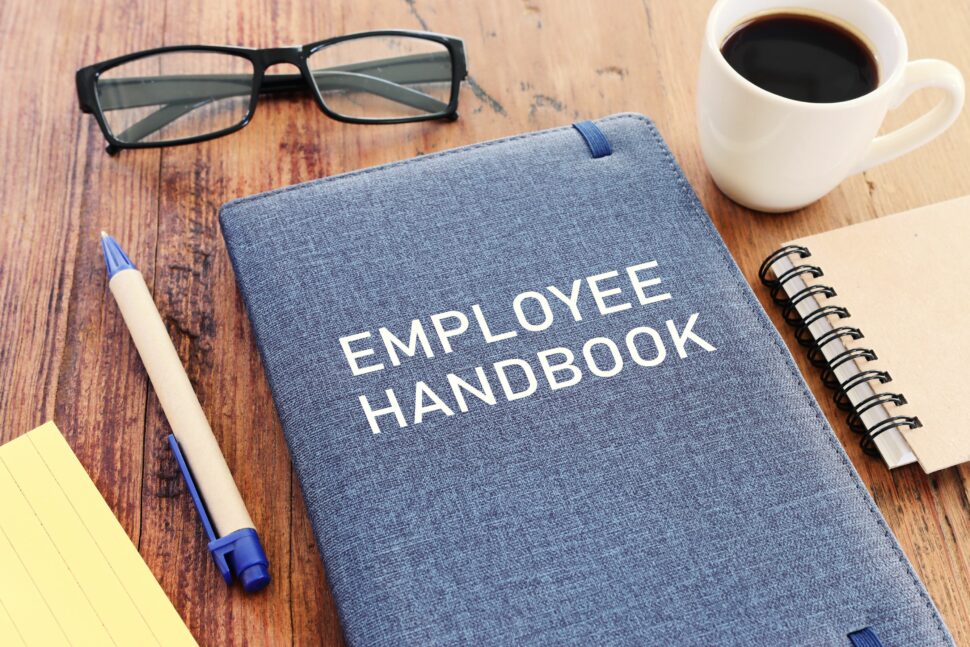Every chain is only as strong as its weakest link. This may sound like a cliché that you’ve heard time and again, but when it comes to running a business with a team, it couldn’t be more accurate. It’s for this reason that training manuals exist. They give an essential foundation to an entire group of people. When it comes to operating a restaurant – especially a busy one – a restaurant training manual is invaluable.
Suppose some employees fail to take note of the information that you’ve supplied everyone with. In that case, you can be confident that it isn’t because of a lack of access to information. Whether they work as your head chef or your newest server, you should create documents relevant to all team members.
Throughout this article, we’ll look at what training manuals are in the restaurant industry. We’ll then share some tips on developing a practical restaurant training manual to maximize the potential of this standard onboarding measure.
What Is a Restaurant Training Manual?
Let’s start with the basics first. Put simply, a restaurant training manual is a document given to staff – new and existing alike – that contains basic information that everyone needs access to.
It speaks to the general aspects of the organization rather than focusing on role-specific advice. Specific guidance, such as recipes, the instructions for dressing a table, or how to order stock, should be included in a separate document, given to employees on a need-to-know basis. An employee training manual can be created easily using a template online.
Having now established what restaurant training manuals are and what they should include, let’s now look at some tips on how to make them as effective as possible.
How to Develop a Restaurant Training Manual
1. Have a Clear Goal
The journey may be fantastic, but it’s always best to know your destination before setting off. It’s unlikely that you’ve set up your restaurant without having a goal, mission statement, or point of differentiation. And it’s even rarer for a business to last for any decent length of time without one.
These are beliefs, ethoses, or motivations that all staff can begin to build into their role. Suppose you want to achieve a more paperless operation. In that case, you need to train servers to use technology and those in charge of ordering stock to move away from printed order forms and invoices to a digital alternative.
Sustainability and the impact that service businesses have on the planet are a focal point for customers. Having satisfactory processes in this area would greatly benefit your restaurant and staff.
Read more: How to Make a Restaurant Environmentally Friendly: 10 Tips & Secrets
Including this early on in your restaurant training manual ensures that any restaurant staff member can give an appropriate answer whenever this topic is raised with customers, suppliers, or media outlets.
2. Break It Down
Often, onboarding material that gives a general view of an organization is unfocused and includes entire chunks of extraneous material. Not only this but the information itself is often presented in a way that is long-winded or impossible to retain.
The vast majority of people benefit from onboarding new information in manageable sections. For this reason, workflows across most industries nowadays come in stage-by-stage processes. For example, in contact centers, processes such as automatic call distribution that have given rise to an ACD service are broken down into stages. This proves effective in increasing efficiency.
With this in mind, be sure to break your training manual into segments. The sooner your staff assimilates the information in the manual, the sooner you will have an entire team operating at the same standard.
It may seem counterintuitive to favor breaks in the information provided rather than delivering everything all at once. However, it can lead to a quicker uptake of knowledge across the board.
3. Monitor Progress
Doing as much as possible to ensure your staff has assimilated the information efficiently is the first step. However, if you don’t follow up and make sure that all employees have understood the training manual, it could leave you vulnerable to weak links in your chain.
Breaking down tasks and reviews into a checklist format allows you to institute governance into your restaurant training manual. This has the added benefit of setting standards for employee work while also making your team almost entirely self-sufficient.
Using a time clock for small business can help monitor progress by tracking employee hours and ensuring tasks are completed efficiently and on schedule.
You might also like: 12 Restaurant Management Tips for Happy Employees & a Successful Business
It makes monitoring progress or problems a lot easier both from an identifying standpoint and a rectifying one. Giving helpful feedback on areas of improvement can then become more focused and specific.
It’s often helpful to create these checklists for different periods of your everyday operations. That helps ensure no drop-off in service or performance, even as shift patterns change and the team rotates night after night. This is a crucial element of both restaurant and call center operations management, which experience a similar staff turnover.
Having a checklist for pre-opening, work hours, and after-hours can be a great way of overseeing the smooth running of your restaurant, particularly in areas of health and safety.
Then, having checklists for particular responsibilities, such as greeting guests, accepting online orders, or plating up, becomes easier to introduce later, as the staff is already used to a similar framework.
4. Include Resources
Earlier in this guide, we laid out that the purpose of your restaurant training manual should be to deliver a basic, general understanding of the essential aspects of the business to all your employees. And while that remains true, some specificity here and there never hurt anyone.
This is particularly true if, for whatever reason, you’re left with a service where someone has to fulfill a role or duty that you didn’t hire them for. Due to COVID19, restaurant industry employees have had to adapt and take on jobs that they hadn’t done in the past, like delivering food to customers.
Read more: 10 Restaurant Staffing Issues and How to Address Them
Having some resources in your restaurant training manual for cross-training employees can be a great way to limit disruption in this scenario. Giving people the basic building blocks of what goes into every role in the restaurant ensures that expertise is more commonly understood.
These shouldn’t be intensive but should contain enough details to allow a server to fill in as front of house host, for example. Furthermore, ideally, a training manual will help you improve communication between the front of house and back of house staff.
5. Optimize Your Restaurant Training Manual
Finally, with all these elements in place, minor tweaks here and there can turn your training manual into a highly effective document. Presenting information in different ways or offering more transparency are a couple of the steps you can take to optimize the content of your manual.
It’s not about making a perfect manual straight away. Spending time and resources elevating its content will save you many avoidable mistakes further down the line.
Sometimes, people can be resistant to change. So the introduction of a new document may raise some questions with your staff. Calling it something less formal than “training manual” could be an excellent way to avoid people digging their heels in from the start.
Another way of optimizing this manual is to recognize that people assimilate information in many different ways. Presenting it in a written format can only get you so far with a portion of your workforce. Introducing diagrams or helpful imagery can help visual learners assimilate the material better. Interactive formats such as a flipbook can make your onboarding materials even more engaging.
Finally, explaining the reasons behind some processes off the bat – particularly those newer, less baked-in approaches – can convince the team much more quickly. Taking the time to explore the “why” alongside the “what” and the “how” is the ideal way to optimize your restaurant training manual.
Conclusion
In this article, we’ve tackled the topic of restaurant training manuals, outlining what these documents are and why you need them. We also shared some tips on creating a restaurant training manual and turning it into a highly effective onboarding and maintenance tool.
This article is a guest post.
Author Bio:
Richard Conn – Senior Director, Demand Generation, 8×8
Richard Conn is the Senior Director for Demand Generation at 8×8, a leading communication and contact center analytics solutions platform with integrated contact center, voice, video, and chat functionality. He is an analytical & results-driven digital marketing leader with a track record of achieving major ROI improvements in fast-paced, competitive B2B environments. He has written for sites such as Kustomer and Loyalty Lion. Check out his LinkedIn.


